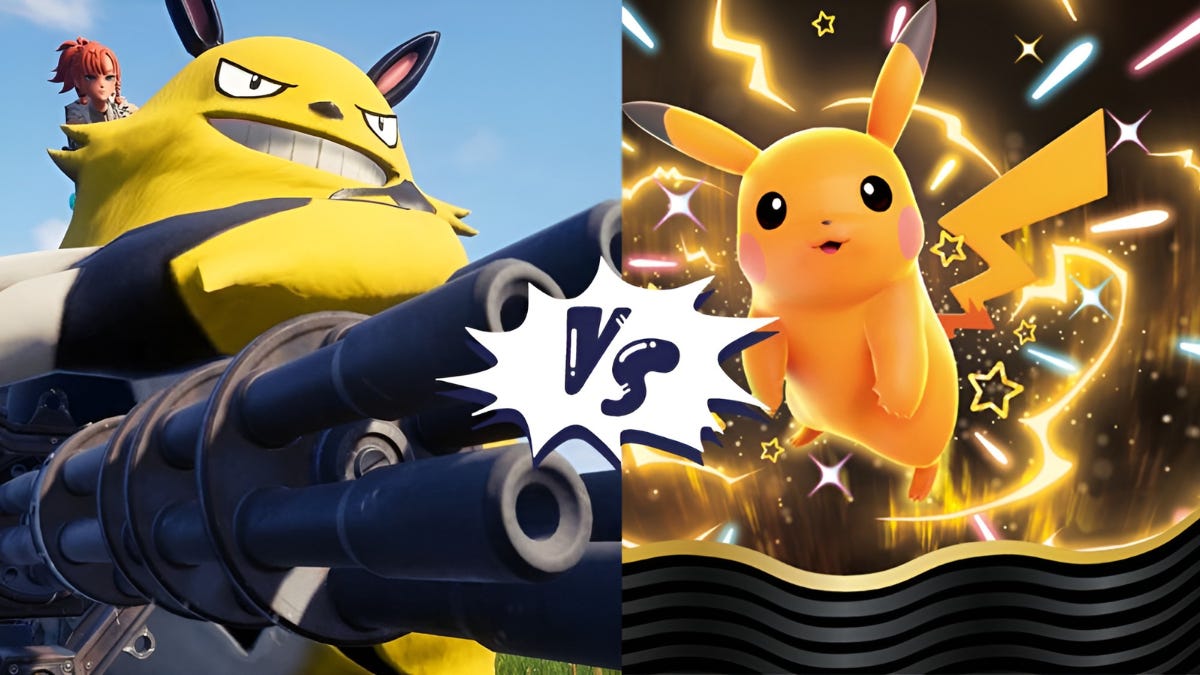Palworld, often marketed as “Pokemon with guns”, is being sued by The Pokemon Company. Most gamers I know are supportive of Palworld as the indie underdog, and most industry folks I know are supportive of free use of game mechanics. Great new games often come from remixing old ideas, and I would hate to see the industry captured and consolidated to the point where individual companies own entire genres due to legal shenanigans. For the most part, intellectual property protection is weak in games. Designers are free to copy and remix ideas; Warcraft copied Dune, LoL copied Dota, Fortnite copied PUBG, and games are better off because of it.
I’ve been playing Tetris Effect. It’s yet another remake of the classic Tetris game with no attempt to reinvent core game mechanics. Instead, the game is a sensory feast; the game features environments ranging from jellyfish to space to late night jazz in the city, with sound effects, music, and dazzling visuals synced to your gameplay. One of the top job titles in the credits was “synesthesia designer”. It’s striking how little the game mechanics have changed from its original conception. Tetronimos fall on a 10x20 grid and you have to stack them into neat rows. Plenty of games flopped while attempting to innovate on this formula, everything from welltris to spheretris to 3D tetris (with Tetris 99 as a notable exception).
Tetris is also particularly curious as an example where intellectual property protection seems very strong. All commercial Tetris-like games are owned or licensed by The Tetris Company, and copycats have been successfully litigated away. This draws a striking contrast to the rest of the games industry, where game mechanics are explicitly not copyrightable. Why is Tetris IP so well-protected?
Intellectual property protection in games broadly falls into three categories; trademark, copyright, and patent.
Trademark protects a brand name from consumer confusion. “Super Mario” is a trademark associated with a family-friendly plumber with a red hat. Nintendo has worked hard to ensure that Mario games have a reputation as high-quality platformers. Other games cannot brand themselves as “Mario” and deceive consumers into buying a totally different game. Trademarks are generally well-protected in games, and Tetris is no exception here.
Patents give inventors exclusive rights to a non-obvious invention for a limited time. In games, patents can cover specific techniques such as user interface elements, matchmaking algorithms, or rendering techniques. But there are limitations; patents are not allowed to be so broad or critical as to lock out an entire game genre from competitors. The Tetris Company does hold several patents for how tetrominoes are manipulated, and how the game implements dynamic difficulty. However, it is dubious how well these would hold up in court as they may be considered too broad or obvious, and it is easy for a tetris clone to avoid using these specific techniques. Patents are not at the core of how The Tetris Company prevents clones.
Copyright is where things get interesting. Copyright in art and media protects a particular expression of an idea. For example, Pokemon does not own the idea of evolving creatures with fantastical powers that fight each other (Digimon offers living proof), but they do own the particular expression of that idea in Pikachu and Charizard. The idea itself is not protected so that other creatives can express that idea in new imaginative ways. However, there is a fuzzy distinction between “idea” and “expression”. For an idea as simple and abstract as Tetris, it seems difficult to express it in a sufficiently unique way. Moreover, the enforcement of copyright is extremely subjective and culturally relative. Most judges and juries are not particularly game-literate, and may have a difficult time telling whether a game element is a general idea or a specific expression.
Tetris, however, is such a popular phenomenon that even the most game-illiterate judge would strongly associate the idea of falling block games with the specific expression in Tetris. This was tested in court in 2012, when Xio Interactive created a tetris clone mobile game called “Mino”. In Tetris Holding, LLC v. Xio Interactive, Inc. the court ruled in favor of Tetris and upheld their copyright, despite Mino using unique audio and visual assets. The judge assessed that the two games were nearly indistinguishable when put side-by-side (see image below).
Unfortunately, this means that The Tetris Company is likely to retain rights to tetris-like games until 2105. While patents only last 20 years, copyright lasts for an author’s lifetime plus 70 years (thanks to Disney), and Alexey Pajitnov is still alive and kicking. The protection of Tetris contrasts sharply with the rampant cloning in match-3 games, where Bejeweled, Candy Crush, Royal Match, and more all utilize the same core mechanics. While there hasn’t been any lawsuits yet, I suspect courts would rule against copyright simply due to the fact that the public has been exposed to a plethora of match-3 games, whereas tetris gameplay is tightly coupled with Tetris.
Curiously, the Pokemon v Palworld case hinges on patent rather than copyright. The patent claims to protect any game mechanic where the player throws an object to capture a character which can subsequently be used in combat (see here for the full text). It’s bizarre to me that this is even a patent, as it doesn’t seem to be a technological innovation at all. It’s just describing how catching and deploying pokemon works in abstract terms. It’s possible that, like Tetris, monster-catching as a concept is so tightly coupled with Pokemon that the courts will rule in their favor. But what do I know? I’m no lawyer. Though as a gamer and developer, I hope that Pokemon’s lawsuit fails and that the industry is free to create more hairbrained mashups like Palworld.



